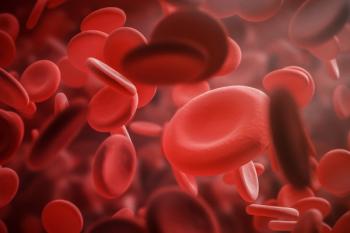
What is bioidentical HRT and is there evidence to support its use?
A: Findings from the Womens Health Initiative (WHD) and other studies offered important information about the risks and benefits of long-term menopausal therapy. As a result, it is currently recommended that HRT be used only for the treatment of moderate to severe menopausal symptoms (vasomotor symptoms, symptoms of vulvar and vaginal atrophy) at the lowest effective dose and for the shortest duration of time consistent with a woman's individual treatment goals and risks. Results from these trials have prompted many women to seek alternatives to conventional HRT. One such alternative is bioidentical hormone replacement therapy (BHRT).
A: Findings from the Women's Health Initiative (WHD) and other studies offered important information about the risks and benefits of long-term menopausal therapy. As a result, it is currently recommended that HRT be used only for the treatment of moderate to severe menopausal symptoms (vasomotor symptoms, symptoms of vulvar and vaginal atrophy) at the lowest effective dose and for the shortest duration of time consistent with a woman's individual treatment goals and risks. Results from these trials have prompted many women to seek alternatives to conventional HRT. One such alternative is bioidentical hormone replacement therapy (BHRT).
Bioidentical hormones are those that are identical in chemical structure to the hormones produced by the human body. BHRT is sometimes referred to as "natural" hormone therapy for two reasons: The hormones used are synthesized from soy or yams and, even more important, the hormones are "natural" to the human body in that they are chemically identical to endogenously produced hormones.
However, this terminology is misleading and is no longer favored. To many, natural implies nonsynthetic substances and refers to the source of the hormone rather than to the chemical structure. For instance, plant-derived phytoestrogens or products consisting of a plant-derived mixture of conjugated estrogens (e.g., Cenestin, Duramed Pharmaceuticals) may be considered "natural," but they are not bioidentical to human hormones. The hormones typically used in BHRT regimens include estrone (E1), estradiol (E2), estriol (E3), progesterone, dehydroepiandrosterone (DHEA), pregnenolone, and testosterone as opposed to ethinyl estradiol, conjugated equine estrogen (CEE), and medroxyprogesterone (MPA), for example.
Several factors are considered prior to choosing a formula. For instance, if a woman has a high risk for breast cancer or other hormone-dependent cancers, E3, which is a weak, short-acting estrogen, is mainly prescribed.
Advocates of compounded BHRT contend that such regimens have several advantages over conventional HRT (e.g., Prempro, Wyeth; Premarin, Wyeth; and Provera ). For example, BHRT can be individualized and adjusted to meet the needs of each patient; multiple bioidentical hormones can be combined into one dosage form, improving ease of administration and compliance; formulations can be compounded for non-oral routes of administration (e.g., transdermal, sublingual), thereby avoiding first pass metabolism and mimicking metabolism of endogenous hormones; and since bioidentical hormones are derived from plants and are identical to human hormones, they are as effective and better tolerated than conventional HRT.
Not all of these contentions are based on sound scientific evidence. For one, individualized BHRT is often based on salivary hormone concentrations, which have been found to have large within-patient variability and not to correlate with serum hormone concentrations. Further, the validity of applying the principles of therapeutic drug monitoring (TDM)-the periodic monitoring of drug levels to ensure adequate dosing-to hormone therapy is questionable. TDM is usually reserved for drugs with known pharmacokinetic profiles and a predictable relationship between the dose and the therapeutic response.
Newsletter
Pharmacy practice is always changing. Stay ahead of the curve with the Drug Topics newsletter and get the latest drug information, industry trends, and patient care tips.































































































































